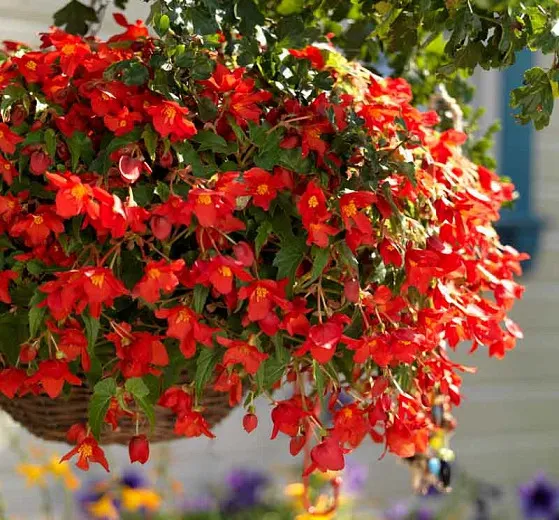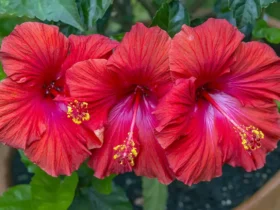Boasting a bushy and upright growth habit, Begonia x intermedia ‘Bertinii’—also known as Tuberous Begonias—emerges as a vibrant and captivating addition to the garden. With its appealing hanging stems, this variety presents a compact form adorned with single, radiant orange flowers.

As a favored choice among shade-loving plants, it brings forth an abundance of blossoms that inject vivid notes of summer color into beds, borders, containers, and hanging baskets.
- The floral display of Begonia ‘Bertinii’ unfolds continuously, gracing the garden from late spring until the arrival of frost. This variety typically attains a height of 18 to 24 inches (45-60 cm), making a statement with its vivid presence.
- For optimal growth, ‘Bertinii’ prefers fertile, well-drained soil with a neutral to acid pH. While partial shade is ideal, it can tolerate sun exposure except during extremely hot conditions. To ensure the well-being of this begonia, prioritize good air circulation and provide protection against strong winds.
- The cultivation of ‘Bertinii’ is a delightfully straightforward endeavor, making it an easy addition to your garden. It resists the appetites of deer and rabbits and demands minimal care.
- When planting, adhere to spacing guidelines of approximately 12 inches apart (30 cm) and position the tubers slightly below the soil line to avoid rotting, as these begonias are sensitive to planting depth. Many gardeners kickstart the growth of begonias indoors, giving them a head start of 4 to 6 weeks before transferring them outdoors, resulting in earlier blooms.
- It’s crucial to note that Begonia ‘Bertinii’ is not winter hardy. In regions colder than zones 9-11, it’s recommended to dig up the tubers prior to the first frost and store them in a dormant state in a cool, dry location over the winter months.
- While a captivating addition to the garden, it’s essential to recognize that Begonia ‘Bertinii’ is toxic to dogs, cats, and horses. Taking precautions to ensure its presence doesn’t pose a threat to your beloved pets is important.








